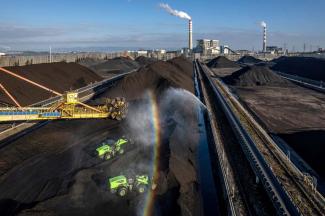
Guangdong Hongda Blasting Company Limited (Hongda) was founded by Dr Zheng Bingxu in 1988 to offer services related to urban control-blasting technologies in China’s Guangdong Province. The firm originally focused on providing demolition services for Guangzhou’s civilian infrastructure, during a time of upswing in airport construction, port development, and the demolition of old buildings to construct high-rise buildings.
Recognising a gap in the market, Bingxu seized the opportunity to pioneer outsourced services for traditional mining companies, leveraging the deep blasting technology expertise he had developed over the years. By 2023, Hongda had expanded its offerings to cover a broad range of mining services, including rock, iron, copper, and coal mining. Its blasting solutions were deployed in over 100 projects across China. The firm had won six government awards in the science and technology categories, and received more than 30 patents for its explosion technologies.
Hongda: Tapping Opportunities in China’s Mining industry
The Chinese mining industry entered a period of rapid growth starting in 1978, when Premier Deng Xiaoping and the Chinese Communist Party introduced sweeping economic reforms. By loosening the rigid, bureaucratic system of capital distribution and gradually opening the country to foreign trade and investment, Deng set the stage for decades of expansion. Over the next 40 years, China's economy grew at an average annual rate of nine percent. This boom extended to the coal industry, which remained under direct supervision of the central government in Beijing. China soon emerged as the world’s largest coal producer.
These developments created the perfect backdrop for Bingxu’s rise. After graduating in 1984 with a degree in underground coal mining from Jiaozuo Mining College, he went on to earn a Master of Engineering in modern blasting technology from the University of Science and Technology of China. Building on his expertise, Bingxu established a specialised blasting team within the Guangdong Coal Industry Research Institute, founding Hongda in 1988.
Bingxu’s interest in offering blasting services to the mining industry was a result of the growing trend of outsourcing in the global mining industry in the early 2000s. As outsourcing became more widespread, specialist firms built deeper capabilities, allowing mining companies to hand off increasingly complex activities—such as excavation and extraction—to external partners. This shift enabled mines to sharpen their focus on core operations while boosting profit margins. By early 2024, nearly 1,500 mining operations were active across China.
Innovating to Stay Ahead
In 1993, Bingxu began investing in the R&D of pile foundation blasting technology. His research showed that pile foundation blasting increased construction efficiency tenfold and reduced construction costs by nearly 85 percent. It was billed as the ‘Hongda Construction Method’, differentiating Hongda from its competitors.
However, pursuing innovation came with significant financial challenges. Unable to cover Hongda’s operating expenses, Bingxu and his partners borrowed money from banks, using their personal assets as collateral. The company even had to issue promissory notes to employees at the end of the year when it was unable to pay them their wages.
Regardless of the financial obstacles faced, Hongda continued to innovate. For instance, in 2003, the company was tasked with a quarrying project in Sanya, South China. Having assessed the site conditions, Hongda developed innovative blasting software that enabled optimal rock fragmentation in a single blast—significantly improving efficiency over traditional multi-blast methodologies.
Another example of Hongda’s innovation was its overhaul of the post-blasting process. The company streamlined the selection of materials and the loading of trucks, which then transferred the materials onto ships for transport. What previously took five hours was cut down to just 40 minutes. This efficiency not only accelerated project timelines—reducing construction periods by six months on most projects—but also generated cost savings of nearly 40 percent, or approximately US$7.25 million.
Hongda’s innovative strategies paid off, and by 2023 it had earned a net profit of US$100 million. By 2024, it had become one of China’s top three explosives producers, and the world’s top mining support services provider by market capitalisation. Hongda’s success was inextricably tied to China’s political and economic environment, and the way in which it straddled the intersection of business and politics.
As the company grew an overseas presence through participation in the Chinese government’s ‘Belt and Road Initiative,’ Hongda presented an insightful case study on the use Business Model Innovation (BMI) for value-chain transformation, strategic decision-making, innovation in high-risk sectors, and risk management.
Moving forward, Bingxu believed that Hongda needed to tackle key issues such as the procurement of regulatory permissions from government bodies, improving mining practices and the safety of mining professionals to stay competitive in an increasingly crowded mining landscape.
This case study 'Blasting a New Trail: How a Bold Start-up Revolutionised Outsourcing in China, Home of the World’s Largest Mining Industry’ was written by Associate Professor Adam Tatarynowicz and Mahima Rao-Kachroo at the Singapore Management University, and Professor Aimin Yan at the Cheung Kong Graduate School of Business, China. To read it in full, please visit the CMP website by clicking here.